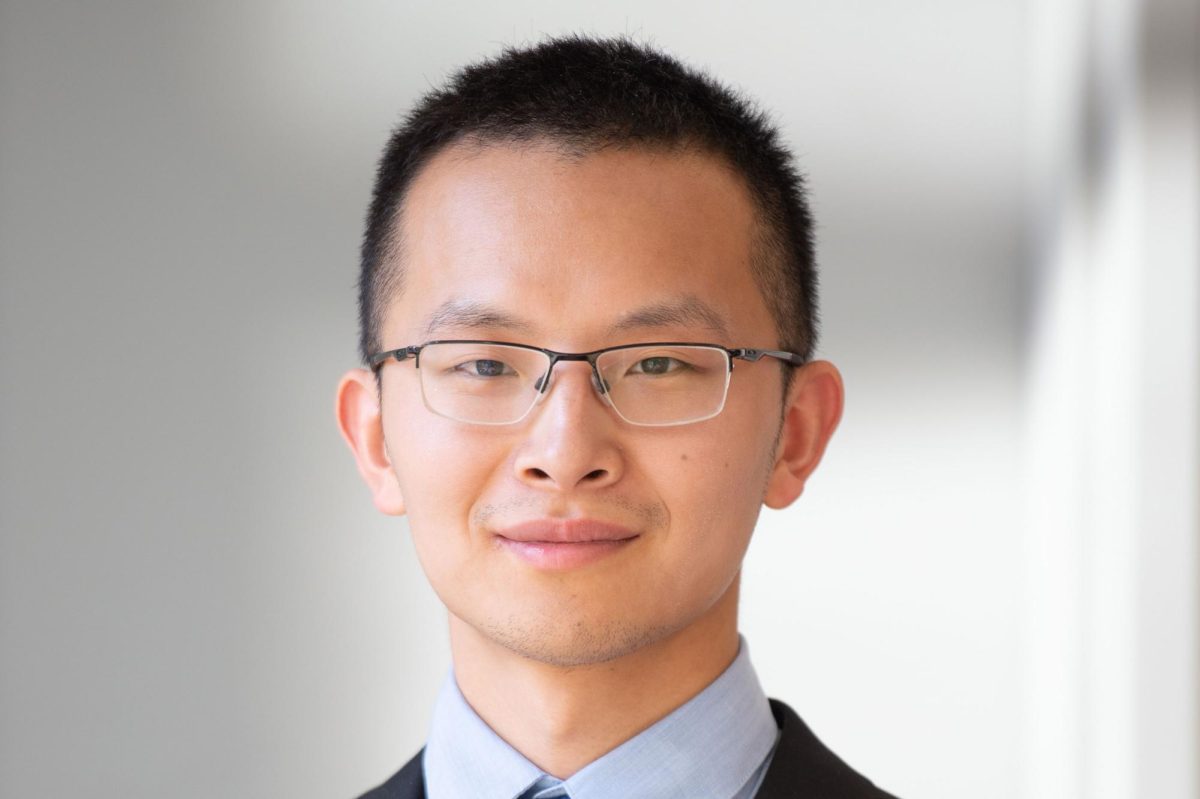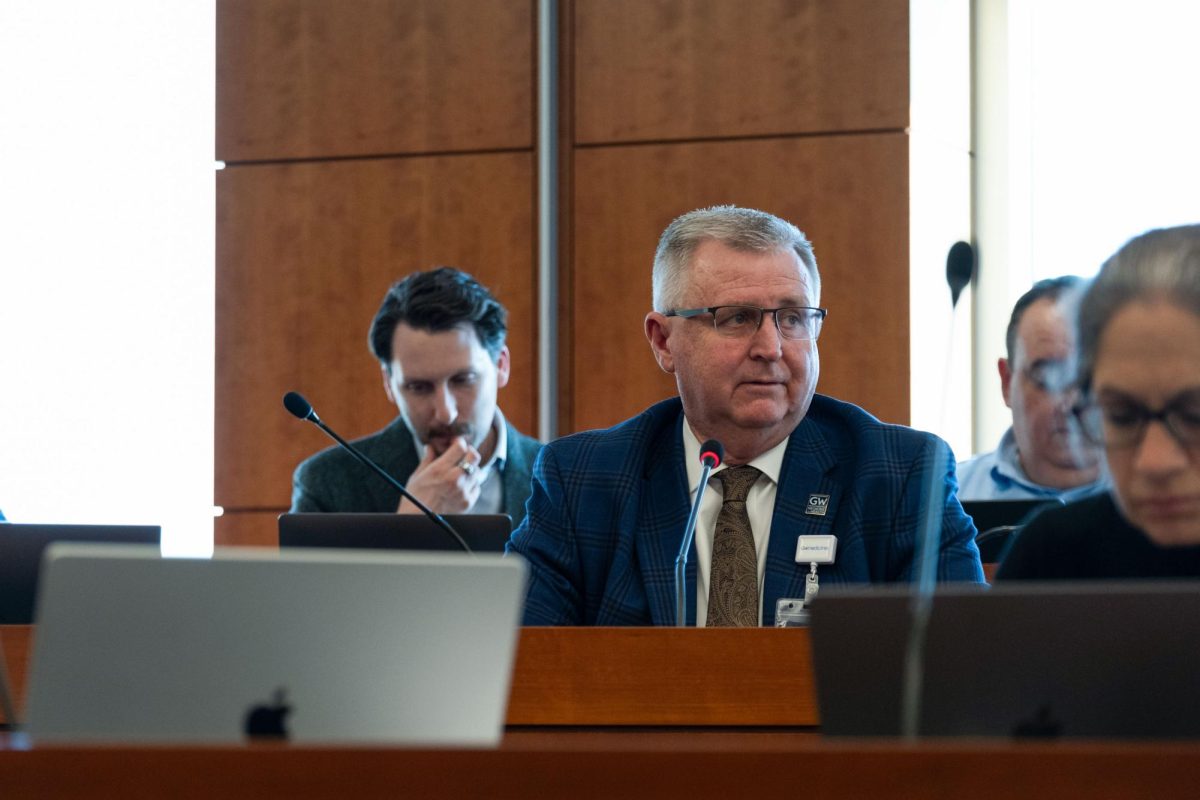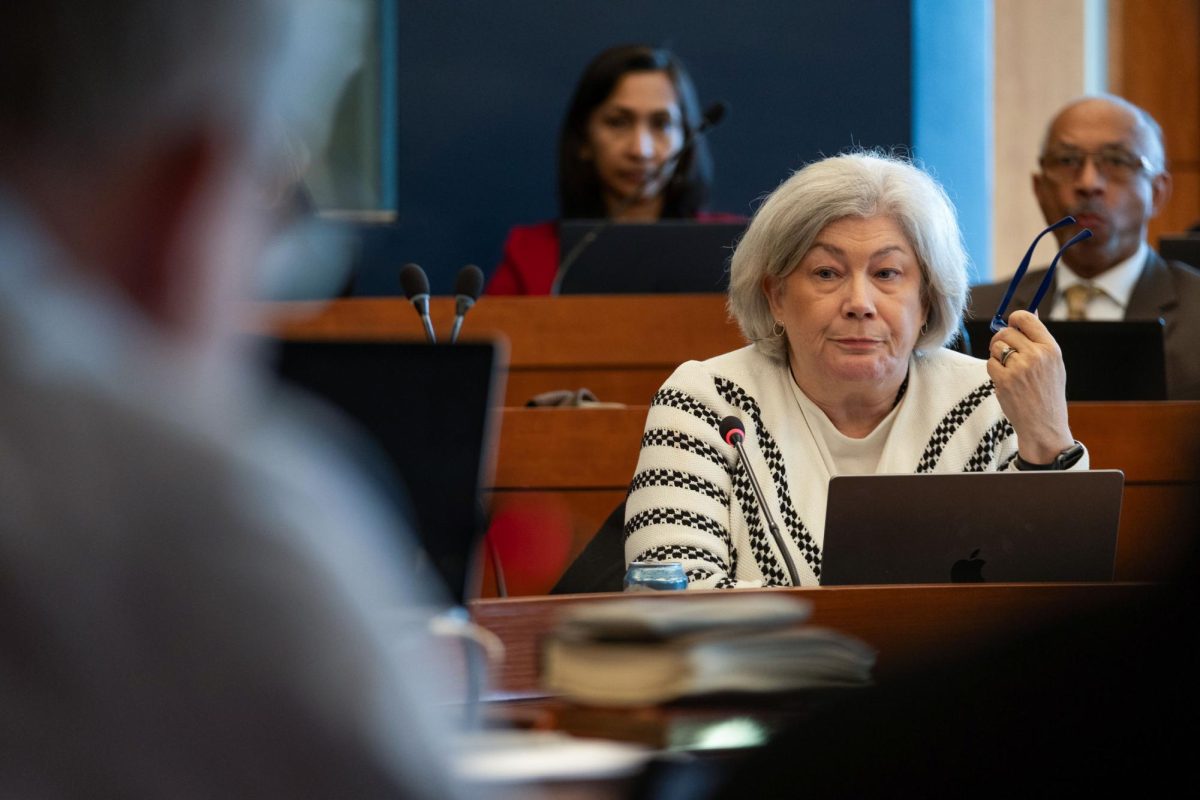A professor and student in the School of Engineering and Applied Science led a team that won a Department of Energy contest last month for a design that helps sustainably recover lithium.
A research team and business led by Xitong Liu, an assistant professor of civil and environmental engineering, and Lingchen Kong, a fourth-year environmental engineering doctoral student, won the American-Made DOE Geothermal Lithium Extraction Prize, a contest where 40 participating teams developed novel lithium extraction methods. The GW team — one of three to win the contest — won a $500,000 prize for their design that uses electricity to capture lithium ions, which Kong said they plan to develop further.
“We know other competitors were also very excellent, and they have their expertise in this field, so we are very surprised and excited to know that we are selected as the winner,” Kong said. “But still, we are confident about our technology.”
Lithium is a highly reactive metal used in manufacturing lithium-ion batteries for consumer electronics, electric vehicles and clean energy storage. The latter two are crucial for President Joe Biden’s goals of 50 percent electric vehicle adoption by 2030 and a net-zero emissions economy by 2050, goals that prompted the contest, according to the DOE.
The DOE also held the contest to secure a domestic supply of lithium, a DOE-designated “critical mineral.” The U.S. currently imports 99 percent of its lithium supply.
The U.S. could extract lithium from the Salton Sea, a salt lake in Southern California, which may hold enough lithium to exceed American domestic rechargeable battery needs but can’t use the material unless they develop an extraction method that wouldn’t damage the environment.
Conventional methods of lithium extraction, like solar evaporation, aren’t sustainable in the U.S. as they severely damage the environment and would require multiple rounds of environmental impact assessments and permits to begin operations, according to the Environmental Protection Agency. Solar evaporation entails digging lithium evaporation pools that can be seen from space, consuming immense water and land resources.
Liu said a new, more environmentally friendly method that uses the existing infrastructure of geothermal power plants in the Salton Sea is needed.
Lithium salts dissolve easily in water to form charged atoms, or ions. The team’s design is a type of direct lithium extraction, or DLE, which he said uses intercalating, or inserting, electrodes to take advantage of this charge. These electrodes, which commonly comprise the positive and negative poles in batteries, readily store and release ions like positively charged lithium ions and negatively charged chloride ions.
He said by passing a current through these electrodes into geothermal brine — a mineral-rich solution found in geothermal sources like in the Salton Sea — the process can capture lithium and chloride, while other undesirable ions, like potassium and sodium, are left in the brine.
Liu said a major problem with many lithium extraction methods is that as geothermal brine cools, compounds that would otherwise be dissolved in hot brine form solids, which can prevent lithium recovery.
“Once they form precipitates on the surface of the material, they can basically block lithium transport,” Liu said.
Liu said his design addresses this problem by removing silica, which prevents lithium recovery, from geothermal brine in the first step.
“Silica is one of the main constituents in the geothermal brine, especially in [the] Salton Sea, so that becomes a huge concern for even other technology as well,” Liu said. “So, how to deal with that is very important.”
Liu said once the process removes silica from the brine, it is then pumped into a tank where the intercalating electrodes capture lithium and chloride ions. He said the geothermal brine is then flushed back into the geothermal source and the tank is filled with recycled water. He said the electrodes then release the captured lithium and chloride ions into the water to form a clean lithium chloride solution.
Liu said this clean solution is then converted to lithium hydroxide solution, which battery manufacturers use to produce batteries. Finally, he said his design uses vacuum evaporation to crystallize lithium hydroxide into a solid before selling it to battery manufacturers.
Liu and Kong’s company, Ellexco, offers the technology and won $20,000 at GW’s New Venture Competition in April.
Experts in lithium extraction from geothermal brine said the pair’s method for lithium extraction has both environmental and time-saving advantages and that if the design becomes commercialized it could then meet U.S. demand for lithium.
Darrell Gallup, a senior process chemist and one of the judges of the competition, said the duo’s design doesn’t produce toxic byproducts because it does not use chemicals. He added that the method also does not use extensive water and land resources, which solar evaporation does, as it merely uses existing infrastructure from geothermal plants in the Salton Sea.
He said the team’s method of concentrating lithium also saves time because it could take hours or days to complete, compared to other methods like solar evaporation, which can take years. He said researchers save time by using the existing infrastructure of geothermal power plants in the Salton Sea instead of having to develop new infrastructure.
Gallup said Liu used well-tested technologies that could be commercializable in two years.
“The thing that impressed me the most was the fact that their technologies were more mature and looked like they would be able to be installed relatively quickly and not have to go through a lot of experimentation in the laboratory going on years and years and years before they could finally achieve the extraction that we were looking for,” Gallup said.
Michael McKibben, a research professor of geology at University of California, Riverside and a member of another finalist team, said developing a domestic supply of lithium by DLE is crucial for strategic reasons, like reducing dependence on imports from China.
McKibben said while South America and Australia extract raw lithium, China remains one of the leading producers of cathodes for lithium batteries. He said though DLE commercialization is a significant first step, it is only part of the process of obtaining lithium batteries, which is what the U.S. government is ultimately interested in.
“The Chinese are way ahead of us,” McKibben said. “They’ve been producing electric cars for a long time. So they’ve really got a head start on everybody else.”
Parans Paranthaman, a corporate fellow of the Oak Ridge National Laboratory, is working on a paper to survey lithium resources in the Salton Sea and said a commercialized DLE method applied to all geothermal plants in and near the Salton Sea would satisfy and even exceed the entire U.S. demand for lithium, making it a net exporter of lithium.
“You could potentially, we projected, maybe [extract] close to 200,000 tons per year,” Paranthaman said. “It’s a possibility. But imagine you have to use the same technology with every geothermal power space currently available. So we have estimated, so if we do all the geothermal Salton Sea sources, we could potentially not just stop the import, we could also do the export.”





